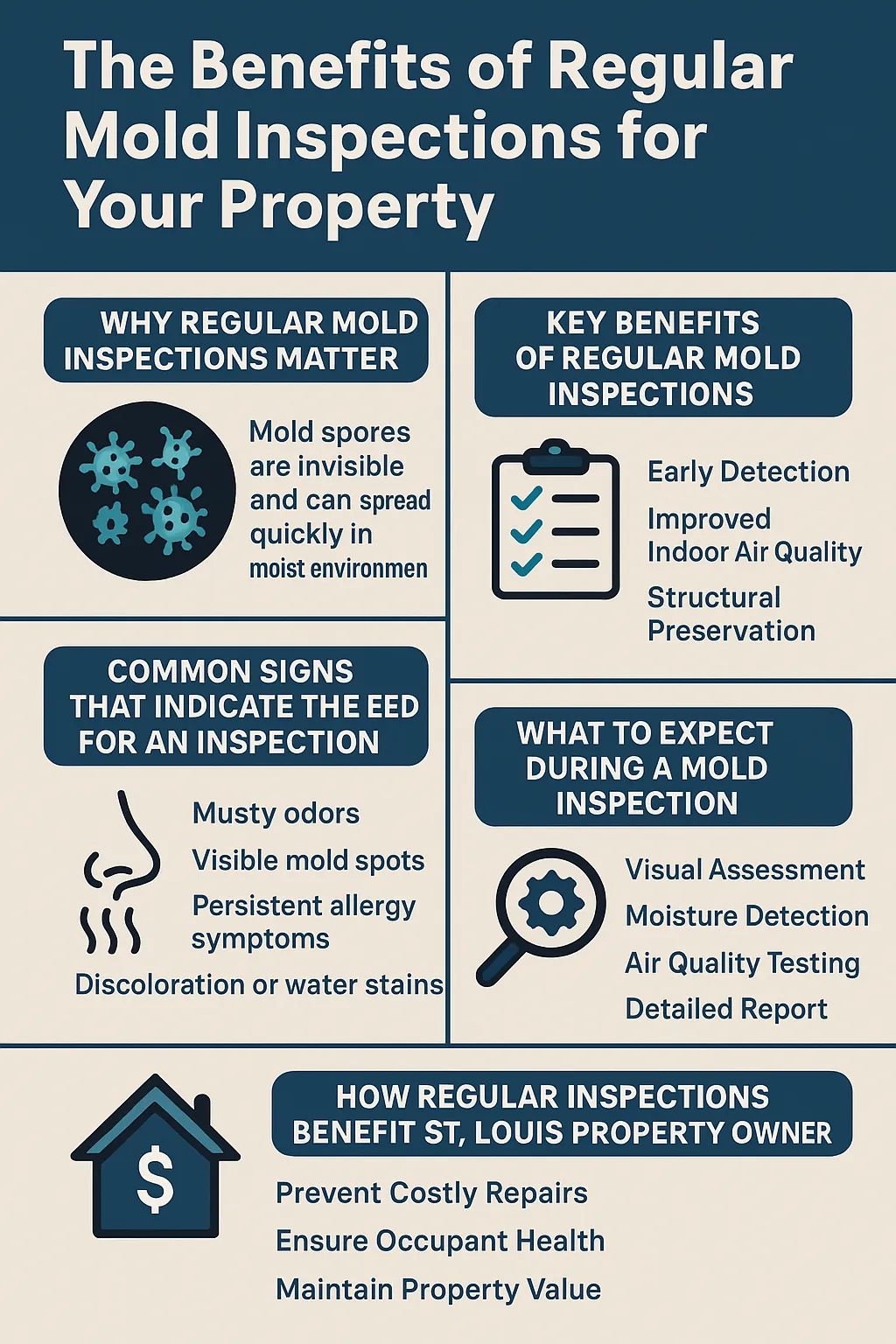Restoration Advice & Tips | Restoration 1 St. Louis Blog

The Benefits of Regular Mold Inspections for Your Property
Regular mold inspections are essential for maintaining the safety, structural integrity, and value of your property. In St. Louis, where humidity levels can promote mold growth, proactive inspections help detect mold issues before they escalate. This article outlines the benefits of scheduling regular mold inspections, key indicators of mold growth, and the importance of professional assessments.
1. Why Regular Mold Inspections Matter
Mold spores are invisible to the naked eye and can spread rapidly in moist environments. Without regular inspections, mold can grow unnoticed, causing structural damage and health risks. Routine assessments ensure that potential problems are identified early, preventing costly repairs and maintaining indoor air quality.
2. Key Benefits of Regular Mold Inspections
Early Detection: Identifies mold growth before it becomes widespread, minimizing removal costs.
Improved Indoor Air Quality: Reduces allergens and respiratory irritants, promoting a healthier environment.
Structural Preservation: Prevents damage to walls, ceilings, and foundations caused by prolonged mold exposure.
Legal and Insurance Compliance: Demonstrates proactive property maintenance, reducing liability risks.
3. Common Signs That Indicate the Need for an Inspection
Musty odors in specific areas
Visible mold spots on walls, ceilings, or HVAC systems
Persistent allergy symptoms among occupants
Discoloration or water stains on surfaces
4. What to Expect During a Mold Inspection
Visual Assessment: Inspectors examine areas prone to moisture, including basements, attics, and crawl spaces.
Moisture Detection: Tools like moisture meters and thermal imaging cameras identify hidden water leaks.
Air Quality Testing: Sampling indoor air helps detect elevated mold spore levels.
Detailed Report: A comprehensive report outlines findings, potential risks, and recommended remediation steps.
5. How Regular Inspections Benefit St. Louis Property Owners
In St. Louis, fluctuating humidity levels and seasonal weather changes create conditions conducive to mold growth. Regular inspections help property owners:
Prevent Costly Repairs: Early detection minimizes structural damage and remediation expenses.
Ensure Occupant Health: Reduces respiratory issues and allergic reactions caused by mold exposure.
Maintain Property Value: Protects the property’s market value by addressing mold issues proactively.
Meet Insurance Requirements: Many insurance policies require regular maintenance to cover mold-related claims.
6. Tips for Preventing Mold Growth Between Inspections
Maintain indoor humidity levels between 30% and 50%.
Use dehumidifiers and ensure proper ventilation in high-moisture areas.
Repair leaks and water damage promptly.
Clean and dry areas affected by water within 24 to 48 hours.
Conclusion
Scheduling regular mold inspections is a proactive measure that protects both the health of occupants and the longevity of your property. For St. Louis homeowners and businesses, routine assessments help detect mold early, prevent costly repairs, and ensure a safe living and working environment. Partnering with certified mold inspection professionals ensures thorough evaluations and provides peace of mind, knowing that your property is protected from the hidden risks of mold growth.
